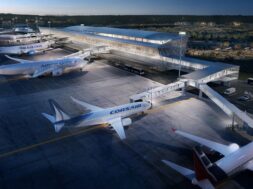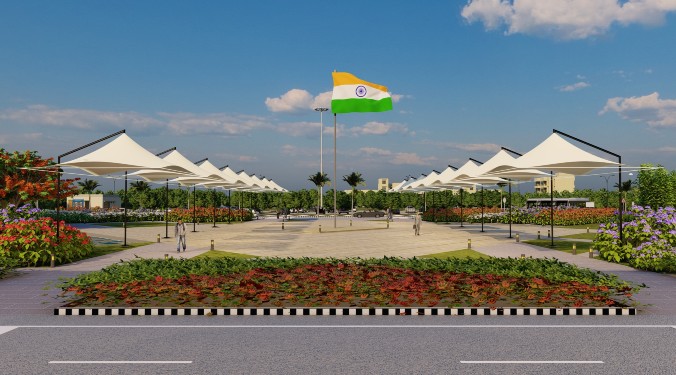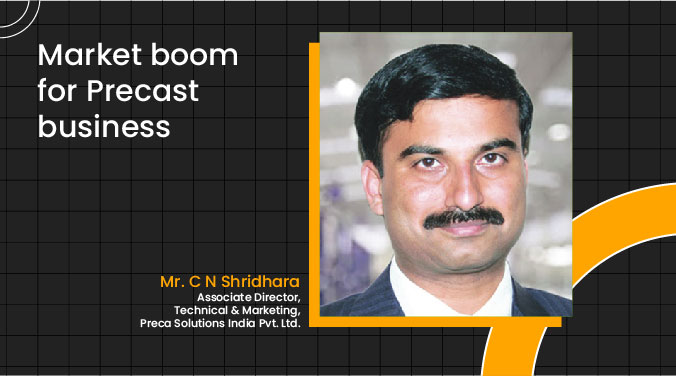“There has been a slow but very prominent shift from the use of traditional masonry towards the use of more attractive façade materials,” states Zoher Chiniwala, Director, Alfa Facade Systems Pvt. Ltd.
Architects, engineers and builders are constantly on the lookout for new ways to improve a building’s performance. Façade has already become a face of innovation in architecture. In an interview with ACE Update, Zoher Chiniwala shares how Alfa Facade is working towards improving the façade not economically but energy efficient too.
What is the importance of façade technology in sustainable architecture?Building facades is one of the largest, most important elements in the overall aesthetic and technical performance of a building. Sustainability is clearly a key issue in today’s construction industry, and a well-designed facade used with the different products and combinations will help bring about a lower environmental impact in the future. An engineered façade for a sustainable building will help bring down energy costs and add to the lifespan of the building. Architects, façade designers and engineers are constantly on the lookout for new ways and products to improve a building’s performance. Rain-screen assemblies, double-skin facades, rear-ventilated facades, and photovoltaic facades are becoming increasingly prevalent. The right choice of material for the building envelope, correct fabrication techniques, and the use of quality and high-performance façade systems are the key to ensure that the structures are protected from the outside elements and function at their best.
How does the façade design affect the function of a building?There are many factors that building designers, whether architects or engineers or consultants have to consider when planning a new building. The forces of nature acting on the building, such as gravity, wind and seismic loading, need to be evaluated and resisted. Functional loads related to the function of the building need to be evaluated and resisted. The façade has to be designed considering all these factors. Façade design is a vital aspect of the building. The façade of the building has to provide protection for its occupants against wind, rain and extremes of humidity, temperature and noise. A properly designed façade can help reduce the buildings energy consumption by improving natural lighting, offering better air flow through natural ventilation and maintaining the levels of noise from the external environment, making a façade-clad building both functional and easy on the eye. Based on experience of design and having worked on several green buildings, we have realized that façade optimisation and design can help reduce as much as 40 per cent of building energy. There will also be aesthetic requirements and constraints on cost that need to be balanced in the design.
How can we enhance the overall performance of the façade?The performance of the façade depends on the façade solution which has been designed for a building. Since climates are variable, the façade solution and products used should have the capacity to bear and adapt to these variable climatic conditions. The façade can give the greatest performance to the building owner and occupants when it becomes an essential element of a fully integrated building design. The selection of the right glass used for the building considering its properties, existing external elements as well as the requirement of the occupants are all to be given careful consideration for optimum performance.
How do you see the recent trends in facade industry in India?There has been a slow but very prominent shift from the use of traditional masonry towards the use of more attractive façade materials. Recently, a whole new range of functional and lightweight building materials throw new light on structural practices. The choices offered are plenty and the benefits may vary depending on the customer’s need.Sustainable products are being considered in many buildings. Combinations of glass, aluminium, steel, copper, zinc and composite materials have been explored in addition to terracotta and some traditional stone in some buildings. Glass is considered a more functional element which can be used by it, or integrated with other technologies and building automation systems.
This quest for energy efficiency has boosted demand for low-emissivity glass, solar-control glass, and photovoltaic and solar thermal energy panels. Unlike other flat-glass markets, the market for solar energy is used effectively worldwide. This explains the fact that all developed countries and fast-developing countries are developing a solar energy module industry.Apart from these requirements, glass with passive fire protection performance will find new applications in facades.
Tell us about the challenges the segment is facing.Façade systems must be dynamic and flexible to accommodate the change in the weather conditions as well as keeping in mind the needs and desires of the occupants — all within the context of the overall building system.
Earlier, the design challenge was to provide adequate heating and cooling capability under peak climatic conditions. Only limited attention was paid to the performance of other glazing systems. Today design takes a more enlightened perspective. Not only do we have to consider tremendous climate variability, but also the occupants need which vary significantly from one space to another.
Some significant challenges we face include lack of awareness about façade systems, not enough skilled labours, limited range of products, clients’ low budget, and competition from small, medium and large façade companies.
Quality of material also affects the project cost and timelines.
What are the products and Technology you offer?We, at Alfa Façade Systems Pvt. Ltd., offer a wide range of products and services. Our state-of-the-art factory, which spreads over 40,000 sq. feet, boasts the latest machineries. The materials that we use are of the highest standards and grades. In order to give the best to our clients, we have the best machines from Italy and Germany. We also have an in-house powder coating and anodising unit to facilitate our production capacities.
What are your strategies to gain a competitive edge over your competitors?The requirements to energy efficiency of new buildings are stricter and more demanding. Because of that, this element has a huge influence on the future consumption of energy.
Our strategy is to examine different improvements of the structural design, windows, unitise and semi-unitised systems, and how these factors are influential in improving energy and indoor climate. Our other strategy also contains a way to combine an alternative energy resource in the façade. This will be a part of a heating and cooling system. The goal is to make the most of the supplied heat from the solar energy.
Cookie Consent
We use cookies to personalize your experience. By continuing to visit this website you agree to our Terms & Conditions, Privacy Policy and Cookie Policy.









